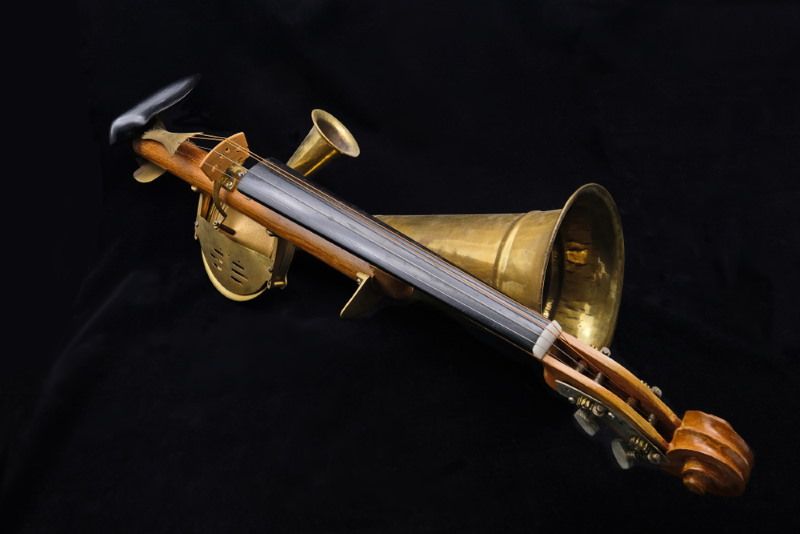Music has always been a reflection of human creativity, and within this vast realm of sound, some instruments stand out as particularly peculiar. Weird instruments capture the imagination and provoke curiosity, often leaving listeners wondering about their origins and the stories behind them. From ancient artifacts to modern inventions, these oddities enrich the musical landscape and challenge our perceptions of what can be considered an instrument.
In this exploration of weird instruments, we will delve into their diverse forms and functions, uncovering the artistry and innovation that birthed them. Whether you're a musician seeking inspiration or simply a curious listener, the world of unusual instruments offers a treasure trove of fascinating sounds, techniques, and histories. Let's embark on this enchanting journey together!
As we navigate through the unique soundscapes created by these odd instruments, we will not only appreciate their auditory qualities but also the cultural significance and emotional connections they evoke. So, what makes these instruments so weird, and how do they contribute to the broader spectrum of music? Let’s dive deeper into the realm of weird instruments and discover the answers!
What Are Some Examples of Weird Instruments?
Weird instruments come in various forms, each with its own distinct sound and cultural background. Here are a few notable examples:
- Theremin: An electronic instrument played without physical contact, producing eerie sounds often associated with science fiction.
- Hang Drum: A steel drum with a unique shape that creates melodic tones, often used in meditative music.
- Didgeridoo: An ancient wind instrument from Australia made from hollowed-out wood, producing deep, resonant drone sounds.
- Glass Armonica: A musical instrument made of glass bowls or goblets that create ethereal sounds when rubbed with wet fingers.
How Do Weird Instruments Impact Music Today?
Weird instruments play a significant role in shaping contemporary music genres. Their unique sounds often inspire musicians to experiment and push the boundaries of traditional composition. From electronic and experimental music to world music fusions, these instruments add layers of texture and depth that captivate audiences. Some musicians intentionally incorporate weird instruments into their work to create a sonic experience that stands out.
Do Weird Instruments Have Cultural Significance?
Many weird instruments are deeply rooted in the cultural practices of their regions of origin. For instance, the didgeridoo is not only a musical instrument but also holds spiritual significance for Indigenous Australians. Similarly, the use of the glass armonica in classical music has historical ties to the Enlightenment era. By understanding the cultural context of these instruments, we can appreciate their contributions to music history and their role in preserving traditions.
Who Are Some Notable Musicians Who Use Weird Instruments?
Throughout history, several musicians have embraced weird instruments, incorporating them into their music to create distinctive sounds. A few noteworthy examples include:
- Brian Eno: Known for his pioneering work in ambient music, Eno often utilizes unconventional instruments and soundscapes.
- Yoshimi P-We: A member of the Japanese band Boredoms, Yoshimi frequently plays the theremin and other unusual instruments.
- Tom Waits: This legendary singer-songwriter is known for his eclectic use of instruments, including the saw and various homemade devices.
What Instruments Are Considered the Weirdest?
While the definition of "weird" is subjective, several instruments are often regarded as the weirdest due to their unusual construction or playing techniques. Some of these include:
- Hydraulophone: A water-based instrument that produces sound through the manipulation of water flow.
- Sharpsichord: A hybrid instrument combining a harp and a percussion feature, creating an intriguing sound.
- Musical Saw: A hand saw used as a musical instrument, producing haunting melodies when played with a bow.
How Can You Learn to Play Weird Instruments?
For those interested in exploring the world of weird instruments, many resources are available to help you get started. Here are some tips:
- Online Tutorials: YouTube and other platforms offer numerous tutorials for learning various weird instruments.
- Local Workshops: Check for community centers or music schools that may offer classes on unusual instruments.
- Join a Community: Engage with online forums or social media groups dedicated to weird instruments to connect with fellow enthusiasts.
Biography of a Renowned Weird Instrument Artist
Among the many artists who have embraced weird instruments, one standout is Hugh Le Caine, a Canadian composer and inventor known for his innovative approach. Here’s a brief overview of his life:
| Name | Birth Date | Occupation | Notable Works |
|---|---|---|---|
| Hugh Le Caine | May 8, 1914 | Composer, Inventor | “Dripsody,” “The Music of Hugh Le Caine” |
Hugh Le Caine was a trailblazer in electronic music and developed several unique instruments, such as the Electronic Sackbut and the Multimoog. His inventions not only expanded the possibilities of sound but also influenced a generation of musicians and composers. By blending technology and artistry, Le Caine exemplified the spirit of creativity that defines the world of weird instruments.
In conclusion, the exploration of weird instruments reveals a rich tapestry of sounds, cultures, and innovations that continue to inspire musicians and listeners alike. Whether through the eerie tones of the theremin or the haunting melodies of the musical saw, these instruments challenge our understanding of music and encourage us to embrace the weird and wonderful aspects of artistic expression.


